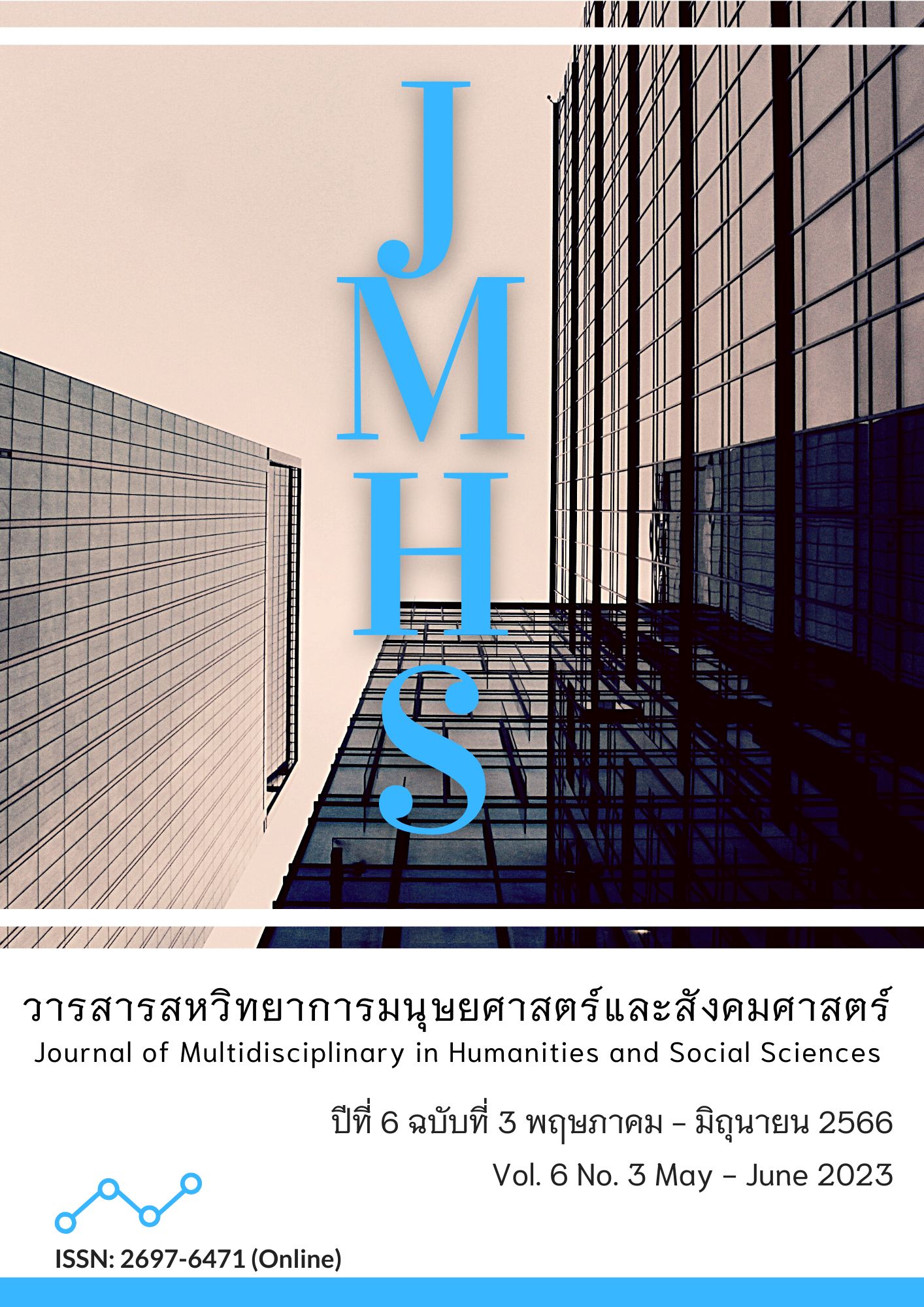Key Success Factors for the Corporate Universities’ Development
Main Article Content
Abstract
The objective of this research was to study the key components of success in the development of corporations and universities. This research was qualitative and collected data from in-depth interviews with 14 key informants from 4 corporate universities chosen by purposive sampling. The selection is based on a given property in terms of management positions, roles, and duties, as well as the importance of the position. Gathering information with a structured interview form and using correlational data analysis. From the research results, it was found that elements of personnel value enhancement and management innovation towards success in the development of corporation universities have five important components, namely success in the development of the corporation university, including organizational strategy, leadership, adding value to personnel, and management innovation.
Article Details

This work is licensed under a Creative Commons Attribution-NonCommercial-NoDerivatives 4.0 International License.
Views and opinions appearing in the Journal it is the responsibility of the author of the article, and does not constitute the view and responsibility of the editorial team.
References
ชาญวิทย์ วสันต์ธนารัตน์, จุลัยวรรณ ด้วงโคตะ และ นพพร ทิแก้วศรี. (2556). มาสร้างองค์กรแห่งความสุขกันเถอะ. นนทบุรี: สองขาครีเอชั่น.
นงลักษณ์ ประสพสุขโชคชัย และ บุญดี บุญญากิจ. (2549). การจัดการความรู้จากทฤษฎีสู่การปฏิบัติ (พิมพ์ครั้งที่ 3). กรุงเทพ: แสงดาว.
ทิพยรัตน์ สีเพชรเหลือง. (2545). รูปแบบกลยุทธ์การจัดตั้งมหาวิทยาลัยบรรษัทในประเทศไทย. กรุงเทพฯ: จุฬาลงกรณ์มหาวิทยาลัย.
พงศกร ศรีรงค์ทอง. (2565). องค์กรแห่งความสุข: มุมมองจากอาจารย์มหาวิทยาลัย. วารสารสุทธิปริทัศน์ มหาวิทยาลัยธุรกิจบัณฑิต, 36(2), 150-169.
Amouzesh, N., Moenifar, Z., & Mousavi, Z. (2011). Sustainable growth rate and firm performance: Evidence from Iran Stock Exchange. International Journal of Business and Social Science, 2(23), 249-255.
Antonelli, G., Cappiello, G., & Pedrini, G (2013). The corporate university in the European utility industries. Utilities Policy, 25, 33-41.
Armstrong, M. (2006). A handbook of human resource management practice (10th ed.). London: Kogan.
Baillien, E., De Witte, H., Vander Elst, T., & Godderis, L. (2016). The role of work stressors, coping strategies and coping resources in the process of workplace bullying: A systematic review and development of a comprehensive model. Aggression and Violent Behavior, 29, 61-71.
Burton, J. (2010). WHO healthy workplace framework and model: Background and supporting literature and practices. Switzerland: World Health Organization. Retrieved from http://www.who.int/
Christiansen, J. (2000). Building the innovative organization: Management systems that encourage innovation. Springer.
Cohen, W. M., & Levinthal, D. A. (1990). Absorptive capacity: A new perspective on learning and innovation. Administrative Science Quarterly, 128-152.
Davol, N.B., Mayor, M.G., & Luisa, M., & Hera, B.D. (2011). “Empirical analysis of technological innovation capacity and competitiveness in EU-15 countries”. African Journal of Business Management, 5(14), 5753-5765.
Harvard Business School. (2006). Alignment: Using the balanced scorecard to create corporate synergies. Boston: Harvard Business Schoo.
Hill, C.W.L., & Jones, G.R. (2009). Strategic management: An integrated approach. Biztantra.
Keashly, L. et al. (2011). “Conflict, Conflict Resolution, and Bullying,” In: S. Einarsen, H. Hoel, D.
Zapf and C. L. Cooper, Eds., Bullying and Harassment in the Workplace: Developments in Theory, Research, and Practice. (pp. 423-445.). Boca Raton: CRC Press.
Pampino Jr, R. N., MacDonald, J. E., Mullin, J. E., & Wilder, D. A. (2004). Weekly feedback vs. daily feedback: An application in retail. Journal of Organizational Behavior Management, 23(2-3), 21-43. https://doi.org/10.1300/J075v23n02_03
Shute, V. J. (2008). Focus on formative feedback. Review of Educational Research, 78(1), 153-189. https://doi.org/10.3102/0034654307313795
Svozilova, A. (2011). Project management: A system approach to project management. (2nd ed.). Prague: Grada.
Suliyanto, S., & Rahab, R. (2012). The role of market orientation and learning orientation in improving innovativeness and performance of small and medium enterprises. Asian Social Science, 8(1), 134.
Tutar, H., Nart, S., & Bingöl, D. (2015). The effects of strategic orientations on innovation capabilities and market performance: The case of ASEM. Procedia-Social and Behavioral Sciences, 207, 709-719. https://doi.org/10.1016/j.sbspro.2015.10.144
van Marrewijk, M., & Hardjono, T.W. (2003). European corporate sustainability framework for managing complexity and corporate transformation. Journal of Business Ethics, 44(2-3), 121-132. http://www.jstor.org/stable/25075022
World Economic Forum (WEF). (2013). Global information technology report. World Economic Forum.
Zehir, C., Can, E., & Karaboga, T. (2015). Linking entrepreneurial orientation to firm performance: The role of differentiation strategy and innovation performance. Procedia-Social and Behavioral Sciences, 210, 358-367. http://dx.doi.org/10.1016/j.sbspro.2015.11.381


